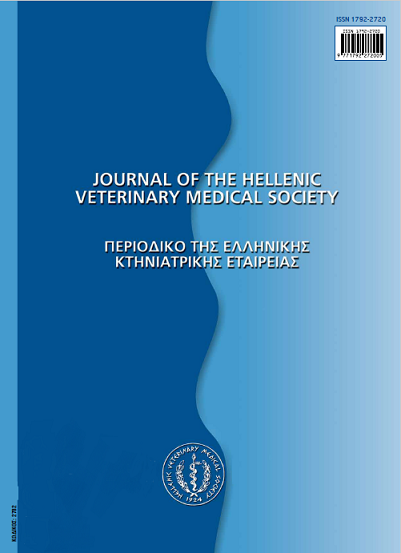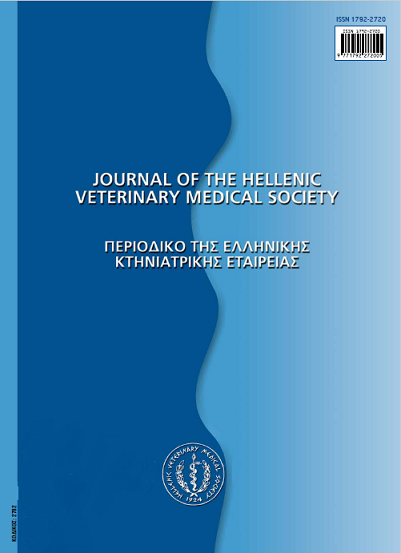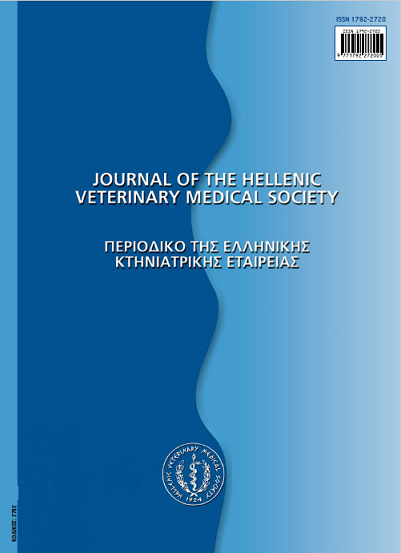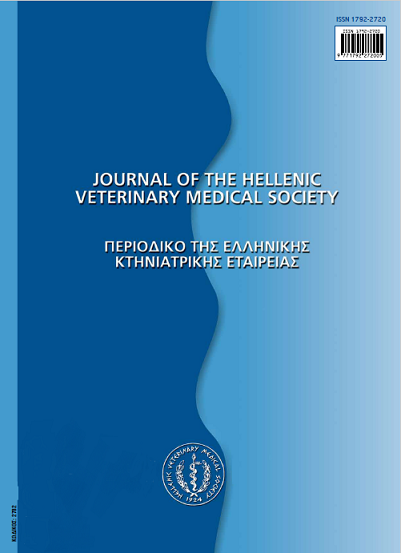Equine enterolithiasis
Аннотация
Enterolithiasis is characterized by the presence of enteroliths in the large colon of horses with the ascending colon being the most common site of obstruction. Enteroliths are composed of ammonium magnesium phosphate, which is supplied both by the digestive processes intestinal bacteria and by feeds. The enteroliths typically form around a central nidus. Although enterolithiasis is seen all over the world, the most cases are reported from North America, and more specifically, California, South West Indiana and Florida. As far as breed is concerned, it affects predominantly Arab horses and rarely Quarter and Thoroughbreds. As far as age is concerned, it is usually seen in middle-aged horses. Although the pathogenesis of enterolithiasis is not fully understood, nutrition and heritability are believed to be a part in it. A rich diet in ammonium, magnesium and phosphorus predisposes to enterolith formation, as those elements are the main components of enteroliths. Clinical signs vary considerably and are rarely characteristic of the disease. Usually, the presence of the enterolith is free of symptoms unless it leads to obstruction. In most cases of enterolithiasis a small amount of faeces, air and the administered mineral oil could pass from the obstruction site. On the contrary, in complete obstructions the passage is closed, defecation is absent and no laxative can pass the obstruction site. The enterolith is rarely found by rectal examination. A history of recurrent colic might be connected to the presence of enteroliths that cause partial or temporary obstruction. The most accurate method for diagnosing enterolithiasis is abdominal radiography. The treatment of choice is the surgical removal of enteroliths, which has a favorable prognosis provided that the laparotomy is going to take place early in course of the disease, before the onset of peritonitis. Intestinal rupture, which rapidly leads to peritonitis, is the gravest and commonest complication. Other complications are colitis, leakage through the laparotomy site and peritonitis. In order to prevent reformation of enteroliths, the daily consumption of alfalfa hay has to be reduced dramatically and poor quality hay has to be administered.
Article Details
- Как цитировать
-
DIAKAKIS (Ν.ΔΙΑΚΑΚΗΣ) N. (2017). Equine enterolithiasis. Journal of the Hellenic Veterinary Medical Society, 59(2), 105–110. https://doi.org/10.12681/jhvms.14952
- Выпуск
- Том 59 № 2 (2008)
- Раздел
- Review Articles
Authors who publish with this journal agree to the following terms:
· Authors retain copyright and grant the journal right of first publication with the work simultaneously licensed under a Creative Commons Attribution Non-Commercial License that allows others to share the work with an acknowledgement of the work's authorship and initial publication in this journal.
· Authors are able to enter into separate, additional contractual arrangements for the non-exclusive distribution of the journal's published version of the work (e.g. post it to an institutional repository or publish it in a book), with an acknowledgement of its initial publication in this journal.
· Authors are permitted and encouraged to post their work online (preferably in institutional repositories or on their website) prior to and during the submission process, as it can lead to productive exchanges, as well as earlier and greater citation of published work.







